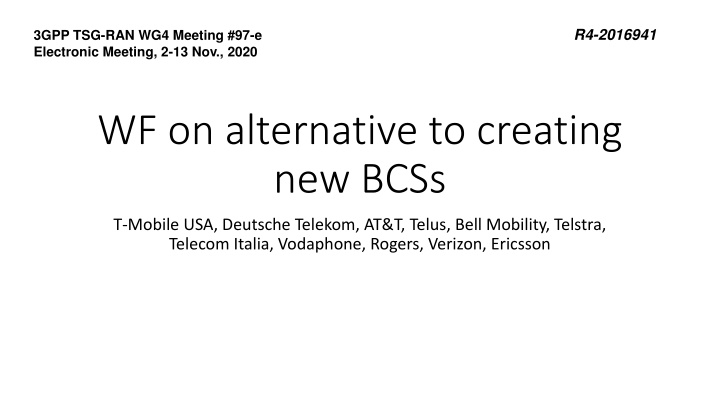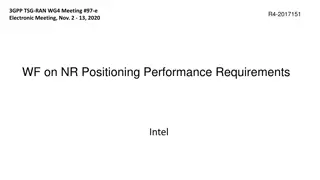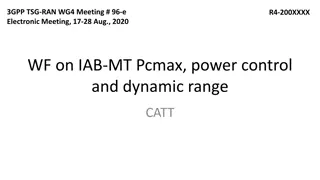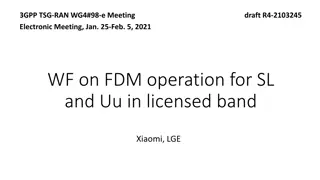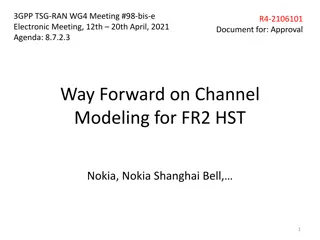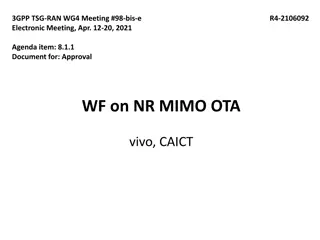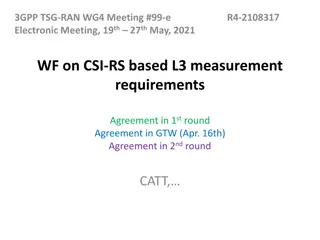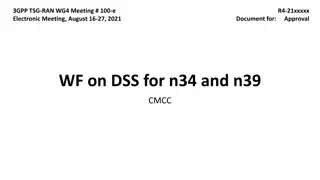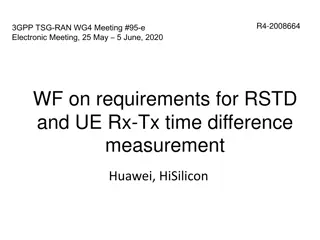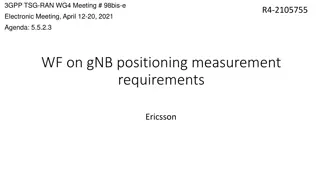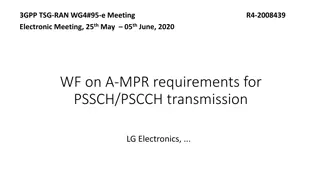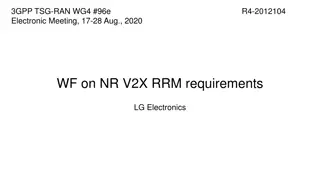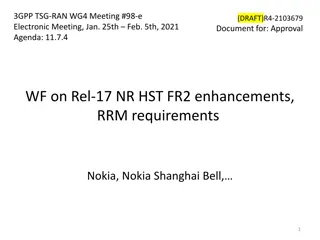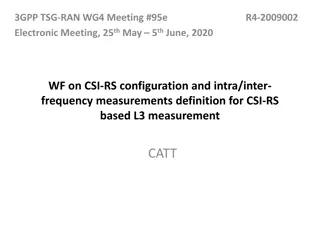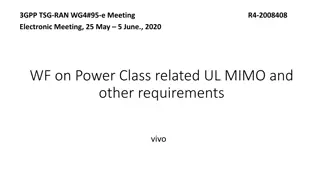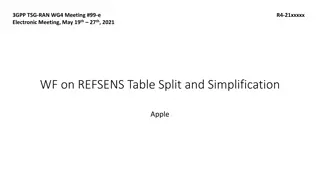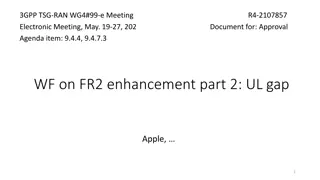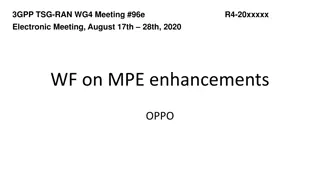Proposals for BCS4 Implementation in 3GPP TSG-RAN-WG4 Meeting #97-e
In the 3GPP TSG-RAN-WG4 Meeting #97-e, proposals were discussed regarding the implementation of BCS4 to address existing issues with BCS systems in inter-band and intra-band NR-CA scenarios. The introduction of BCS4 aims to reduce RAN4 workload, improve efficiency in analyzing new channel bandwidths, and address concerns related to MSD analysis and IoDT testing load. Various proposals were put forward, including Proposal 21 for BCS4 implementation and Proposal 32 for introducing a new BCS4 WID for comprehensive analysis. The focus is on streamlining processes, improving efficiency, and ensuring proper analysis for new band combinations.
Download Presentation

Please find below an Image/Link to download the presentation.
The content on the website is provided AS IS for your information and personal use only. It may not be sold, licensed, or shared on other websites without obtaining consent from the author.If you encounter any issues during the download, it is possible that the publisher has removed the file from their server.
You are allowed to download the files provided on this website for personal or commercial use, subject to the condition that they are used lawfully. All files are the property of their respective owners.
The content on the website is provided AS IS for your information and personal use only. It may not be sold, licensed, or shared on other websites without obtaining consent from the author.
E N D
Presentation Transcript
3GPP TSG-RAN WG4 Meeting #97-e Electronic Meeting, 2-13 Nov., 2020 R4-2016941 WF on alternative to creating new BCSs T-Mobile USA, Deutsche Telekom, AT&T, Telus, Bell Mobility, Telstra, Telecom Italia, Vodaphone, Rogers, Verizon, Ericsson
Background: Existing Issues with BCSs There are open issues with the current BCS system for inter-band and intra-band NR-CA If there are multiple BCSs for the fallbacks, how does the gNB know which BCS the UE supports for the fallbacks? In some cases the higher order BCS include channel BWs that the lower order combinations do not. How is that to be interpreted? In some cases the lower order BCSs include channel BWs that the higher order combinations do no? How is that to be interpreted? BCS4 could alleviate all of these issues without creating many new BCSs
Background: Reducing RAN4 workload As RAN4 is overworked, there is a desire to find ways to reduce the RAN4 workload The creation of BCS4 is one way to reduce RAN4 workload. Proponents of new band combinations would not need to request new BCSs for every new band combination, and every time a new channel BW is added to a band Instead of spending time on BCSs, RAN4 could focus on making sure the work is properly done for new band combination requests and adding new channel bandwidths to existing bands
Background: Concerns with BCS4 Concern 1: New channel BWs in BCS4 will need MSD analysis. Who will ensure the proper analysis is done? MSD analysis is not always being properly done today. Regardless of what is decided for BCS4, we need a way to ensure this is corrected. A new BCS4 WID could ensure MSD analysis is performed for all all channel BWs for all existing band combinations New band combinations requests will need to analyze MSD for every bandwidth of each band in the combination When a new bandwidth is added to a legacy band, MSD analysis needs to be performed for every band combination with that band that has an MSD issue. Concern 2: IoDT testing load will increase Operators are typically requesting all channel BWs for maximum flexibility. For band combinations where there is no interest in certain channel BWs, the proponents could still propose BCSs.
BCS4 proposals Proposal 21: Introduce BCS 4 for inter-band and intra-band NR-CA, which shall indicate that for the band combination the UE supports all of the possible combinations of bandwidths based on the bandwidths the UE supports for each band as indicated in the UE capabilities and restricted by the notes in Table 5.3.5-1 in 38-101-1, and the maximum bandwidth for the band in the band combination as indicated in the UE capabilities. The BCS table does not need to fill in the channel bandwidths for BCS4 for new band combinations. Proposal 32: New BCS4 WID to be proposed to ensure that all required analysis including MSD, MPR/A-MPR, etc. be performed for BCS4 for every existing band combination configuration (up to 3 bands) Proposal 13: At RAN4 #98e, As one of the objectives of the WID, technically confirm what each of the following three methods can realize and compare the cost versus the benefits and discuss its necessity. The candidate methods are the original BCS4, two enhanced BCS4 methods: One is BCS4 with additional minimum channel bandwidth for each CC in NR band within a band combination via UE capability signalling, and the other is BCS4 with UE signalling multiple feature sets with different maximum and minimum channel bandwidth supporting on each CC for the same band combination. Proposal 4: For new 3 band or less band combinations, MSD analysis will need to include every bandwidth of each band in the combination Proposal 5: When new channel BWs are added to a band, the proponent needs to identify all band combinations (with up to 3 bands) with that band and ensure MSD is analyzed for each case. Update the detailed process in the Adding channel bandwidth support to existing NR bands to include the necessary steps. Proposal 6: To ease the concerns of vendors concerned that IoDT will increase with BCS4, RAN4 shall allow new BCSs to be created as requested for band combinations, but BCSs will not be required for new band combinations. Proposal 7: For 35 and 45 MHz, the WID should be updated so that MSD analysis is performed for all of the band combinations for each band that 35 and/or 45 MHz are added to.
